Dry Dredgers Field Trip
Sept 27, 2003
Maysville, KY
Page 3: Fossils Found That Day, Part 1
The best find of the day was by Dan Cooper, our field trip chairman. He found a
rock with, what may be, two large-sized Carpoids! WE NOW HAVE A PICTURE OF ONE
OF THESE TWO BEASTS! (Thanks Dan!) They look a bit like blastoids, but that's
unlikely. The verdict is still out on their true identify. Nice going Dan!!!
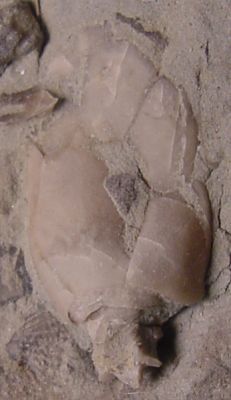

Photo of one of two potential Carpoids, found and photographed by
Dan Cooper(left).
At right, a drawing of a true carpoid, Enoploura popeii, drawn by Colin
Sumrall.

Here's the other Carpoid on the same slab.
Echinoderms were abundant on this site. One member found more than a dozen Ectenocrinus calyxes (heads/cups). Another member found 8 of them. Again, photos are lacking because this site was so large, it was impossible to keep up with everyone.
The rain made the light brown and slightly pink crinoids stand out against the grey shale, as shown in the crinoid stems and heads pictured below. All of these specimens were found that day.
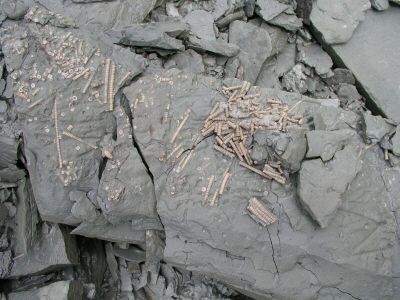
Abundant stems and "log jam" fragments. (above)
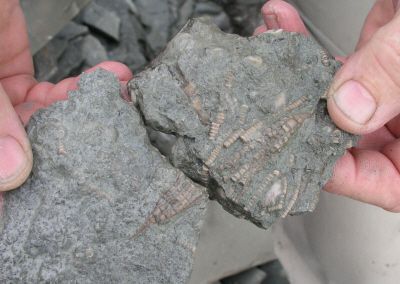
Two rocks with calyxes of Ectenocrinus simplex.
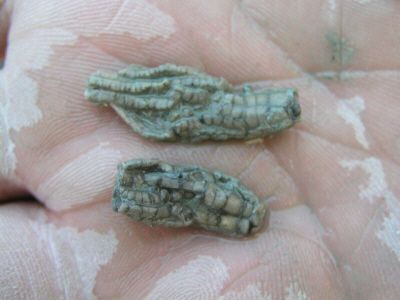
Two Ectenocrinus simplex calyxes.
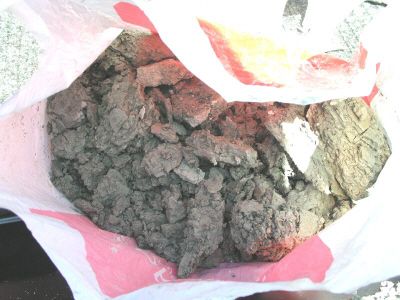
Massive quantities of crinoid stems were dug up along with the loose shale and mud for careful examination later at home. This pile of dirt might contain dozens of calyxes!
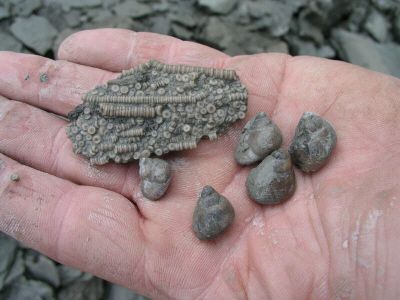
In addition to crinoids, lots of the gastropod, Cyclonema, were found. This is one of the few snails in the Cincinnatian with shell details visible.
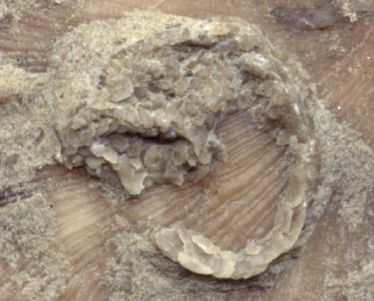
Here's an partial
Edrioasteroid
on a
Rafinequina
.
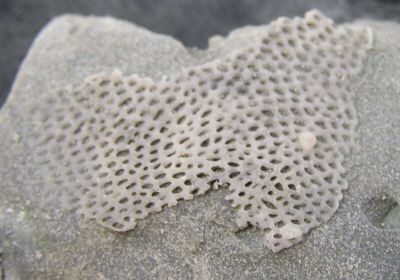
The specimen above is probably a fenestrate bryozoan.
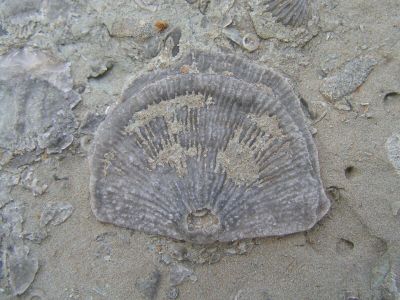
Here's an interesting brachiopod. It is a Strophomena maysvillensis Foerste, 1909 (Thanks Eric for the identification!) It was found in the Fairview Formation.
There is a really nice zone with intense quantities of Strophomena
on this site. As shown below, they are mostly cemented into a layer about 2 feet
thick with limestone. This is a good find for any collector because Strophomena
are normally not found in the Maysvillian strata. They are limited to this one
layer.

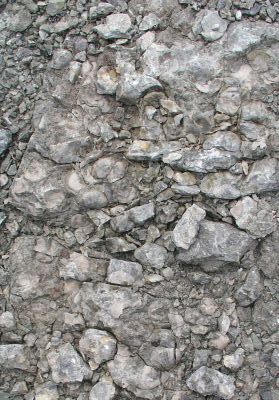
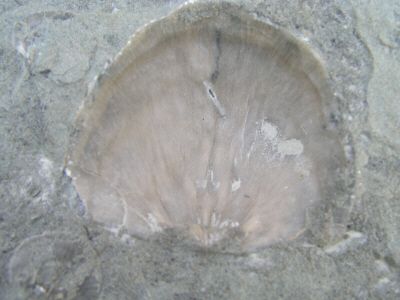
Here's one of those Strophomena Brachiopods (above) showing the
interior of the brachial valve.

Yes, and there were lots of Vinlandostrophia ponderosa in the upper
layers of the site.
Next Page: Fossils Found That Day, Part 2
Page 1: Introduction
Page 2: More Collecting Pics
Page 3: Fossils Found That Day, Part 1
Page 4: Fossils Found That Day, Part 2
Back to the Field Trip Index
Back to the Dry Dredgers Home PageThe Dry Dredgers and individual contributors reserve the rights to all information, images, and content presented here. Permission to reproduce in any fashion, must be requested in writing to admin@drydredgers.org.
www.drydredgers.org is designed and maintained by Bill Heimbrock.